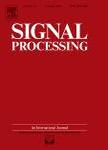版权所有:内蒙古大学图书馆 技术提供:维普资讯• 智图
内蒙古自治区呼和浩特市赛罕区大学西街235号 邮编: 010021

作者机构:Univ Illinois Coordinated Sci Lab Urbana IL 61801 USA
出 版 物:《SIGNAL PROCESSING》 (信号处理)
年 卷 期:2001年第81卷第6期
页 面:1121-1139页
核心收录:
基 金:National Science Foundation, NSF, (MIP-97-07633, CDA 96-24396, CCR 00-81268) National Science Foundation, NSF
主 题:watermarking information theory game theory random processes image processing transforms
摘 要:This paper reviews the role of information theory in characterizing the fundamental limits of watermarking systems and in guiding the development of optimal watermark embedding algorithms and optimal attacks. Watermarking can be viewed as a communication problem with side information (in the form of the host signal and/or a cryptographic key) available at the encoder and the decoder. The problem is mathematically defined by distortion constraints, by statistical models for the host signal, and by the information available in the game between the information hider, the attacker, and the decoder. In particular, information theory explains why the performance of watermark decoders that do not have access to the host signal may surprisingly be as good as the performance of decoders that know the host signal. The theory is illustrated with several examples, including an application to image watermarking. Capacity expressions are derived under a parallel-Gaussian model for the host-image source. Sparsity is the single most important property of the source that determines capacity. (C) 2001 Elsevier Science B.V. All rights reserved.